As I begin to write this the appropriate greeting is ‘Shabbat Shalom’.
Tiberius has suddenly grown quiet as Friday comes to an end, and the Sabbath or ‘Shabbat‘ begins.
We have had a momentous day in north-west Galilee [map]. It was another hot day with 60 to 90 minute visits to various sites and activities, interspersed with recovery and travel in the air-conditioned bus. The wind is blowing like a thermo-wave oven so we are drinking water continuously.
Our first visit was the Mount of the Beatitudes which is simply one of many curved hillsides along the north-west part of Lake Galilee, or Sea of Tiberius, or Gennesaret, as the body of water is variously named. It is often said, and I feel it too, that there is a sweet calm over the area – even though its history is very far from peaceful. According to Josephus it ran red with blood during the Roman suppression of the first Jewish Revolt around 68 A.D. -but still, I feel some sweet calm.
The Beatitudes Mount is, of course, topped with a fine church and spaces to contemplate. Immediately below the mount is a slightly dipped slope which is believed to be where Jesus actually spoke the Beatitudes. It is now a private banana plantation visible only through a wire fence. We had a time of reflecting on what Jesus was doing and conveying by the way he did it and the way he said it.
The photo below looks down the slope from the top of the Mount of Beatitudes over where the multitudes sat as Jesus spoke. What you see are eucalyptus trees common in the region and mesh-covered banana plantations. The biblical narrative portrays a mountain context with Jesus bringing a new ‘law’. For this he would be near the top speaking down? However, acoustic efficiency would have Jesus near the bottom using the hill as a natural amphitheater, something people would have been familiar with from Greek and Roman building. Might Jesus have come down the mount to speak thus harmonising the possibilities as Moses did in coming down from Mount Sinai? Seeing the land-form is like visiting a crime scene and makes one reconsider the previous textual interpretation.
From the Beatitude Mount it was a short ride to see what was named as ’The Jesus Boat’. It is certainly an example of an actual first century boat. Some may remember its discovery during a drought period of low water level on Genesaret in 1986. I have always wanted to see it and know more, and today was the day. A picture follows below showing a boat that was finely crafted and easily capable of carrying a dozen men. This was another moment of contact with part of the Gospel narrative.
I pulled myself away from this temperature-controlled exhibition hall for a lake cruise. It was very special to be out on the water seeing the land as it rose from the water.
Then back onshore and off to Magdala where Mary Magdalene came from. In 2009 digging started to begin work on a new hostel. As is to be expected, building excavations nearly always reveal archeological materials which means the building site becomes an archeological site and remains so until fully processed.
What had been discovered was the town of Magdala! Two features stand out. They are the synagogue and the ‘mikva’ot’, or ritual washing baths. Magdala is very much in the region Jesus conducted his ministry, so it is highly likely he visited this synagogue. We took time to lean in and touch the stones to pray here. A picture follows below of the synagogue floor and a few columns now under permanent roof cover.
We also visited a recently built church at Magdala dedicated to women who supported Jesus. It was built over some first century Roman paving featured in the crypt or lower level.
From Magdala via a lunch stop it was on to Capernaum and what is claimed to be Peter’s house. Capernaum was the base of Jesus’ ministry in Galilee and beyond. It was Peter’s hometown where, in a boat such as seen earlier, he fished the deep rich waters of the Genesaret. Capernaum featured a 4th century Synagogue built in limestone over the first century synagogue’s basalt foundation. This is labeled as Jesus’ synagogue.
Looking down from the synagogue entrance towards the lake are the foundations and lower wall ruins of first century Capernaum. About 50 meters away is Peter’s House. It’s an octagonal structure and suggests Peter had done well in the fishing business. If the deductions are correct this is where Jesus healed Peter’s mother-in-law. Above this site is built a church which hovers over what is thought of as the first Christian house church – the house of Peter the Fisherman.
Fifty meters further down the slope is the coastline. See photo below.
From Capernaum it was back to the hotel in Tiberius for an evening meal preceded by the Kiddush or ‘sabbath blessing’ with wine and bread.
This was a day rich in places and features closely associated with Jesus and his Galilee ministry.
Shabbat Shalom!
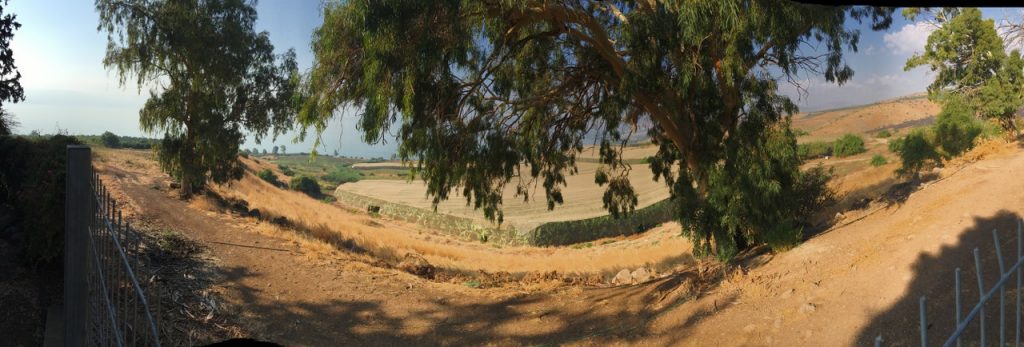
Looking down the slope The Mount of Beatitudes 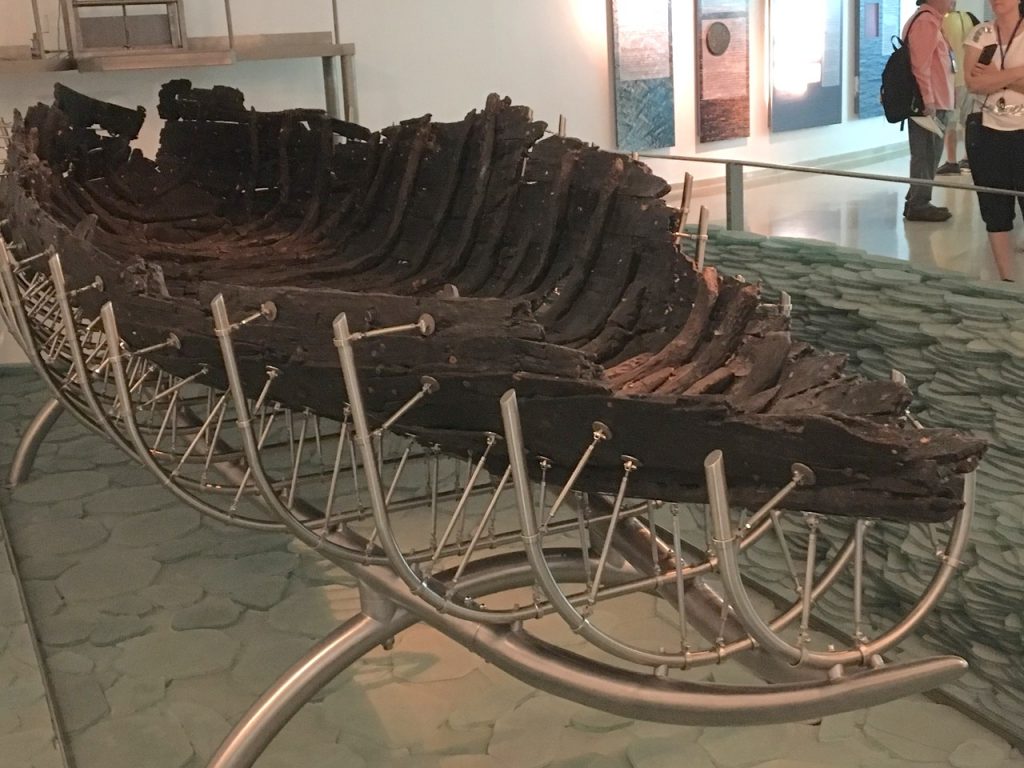
The so-called ‘Jesus Boat’ excavated in 1986 from the exposed bed of Lake Galilee 
A panoramic shot of lake Galilee and surrounding hills 
“Come let us go to the other side”. That ‘other side’ can be 13 km away, this is what it looks like from across what was the Jewish side of Genesaret – a long way to row! 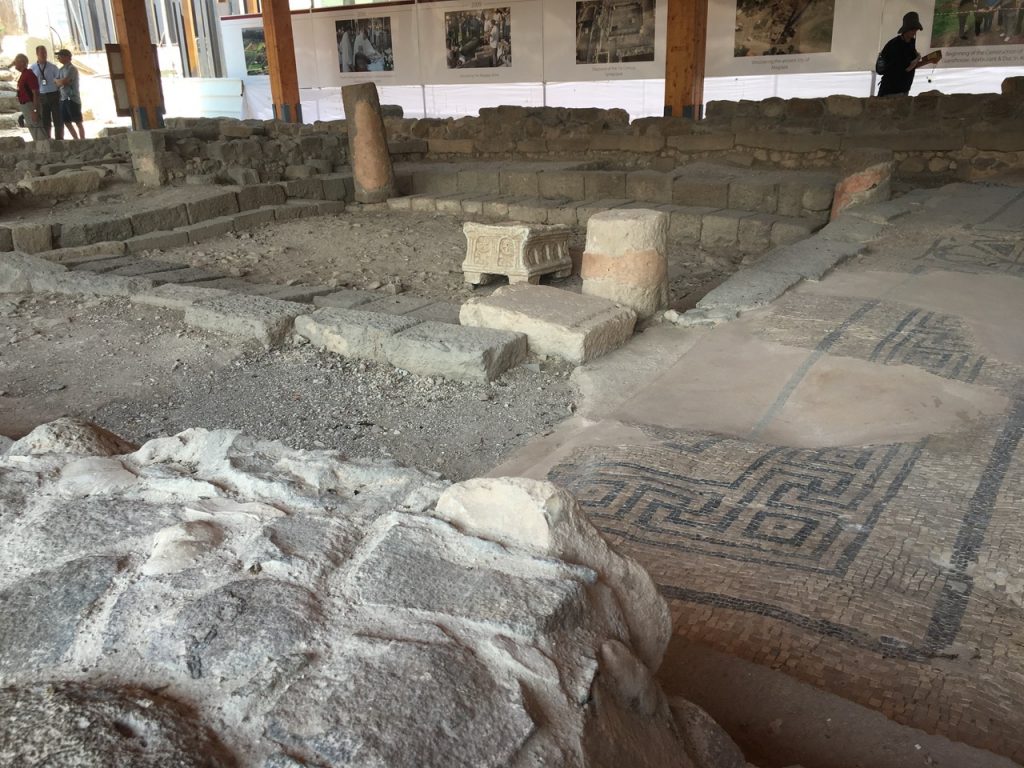
First century synagogue of Magdala looking from the top end into the main meeting space. The large limestone box in the foreground has been interpreted as a model of the Jerusalem Temple which is very significant, linking this Galilee synagogue with Jerusalem. 
Under this 4th century Synagogue in Capernaum lies the synagogue Jesus will have known. 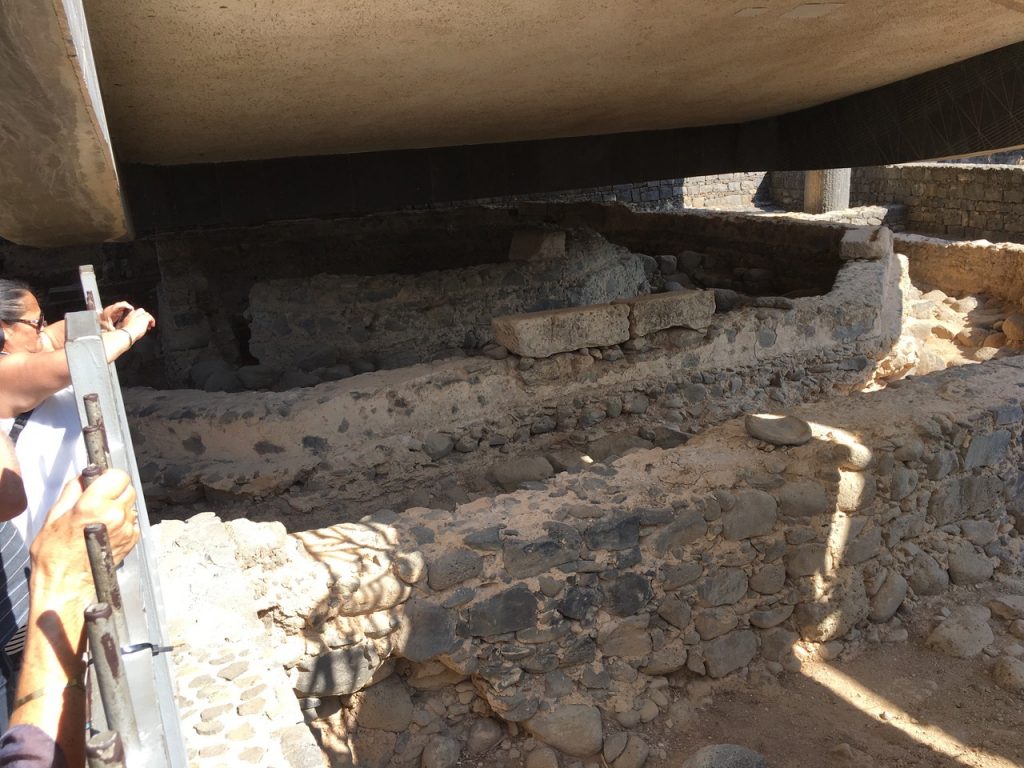
The lower walls of Peter’s house lie now under a church that straddles the site. 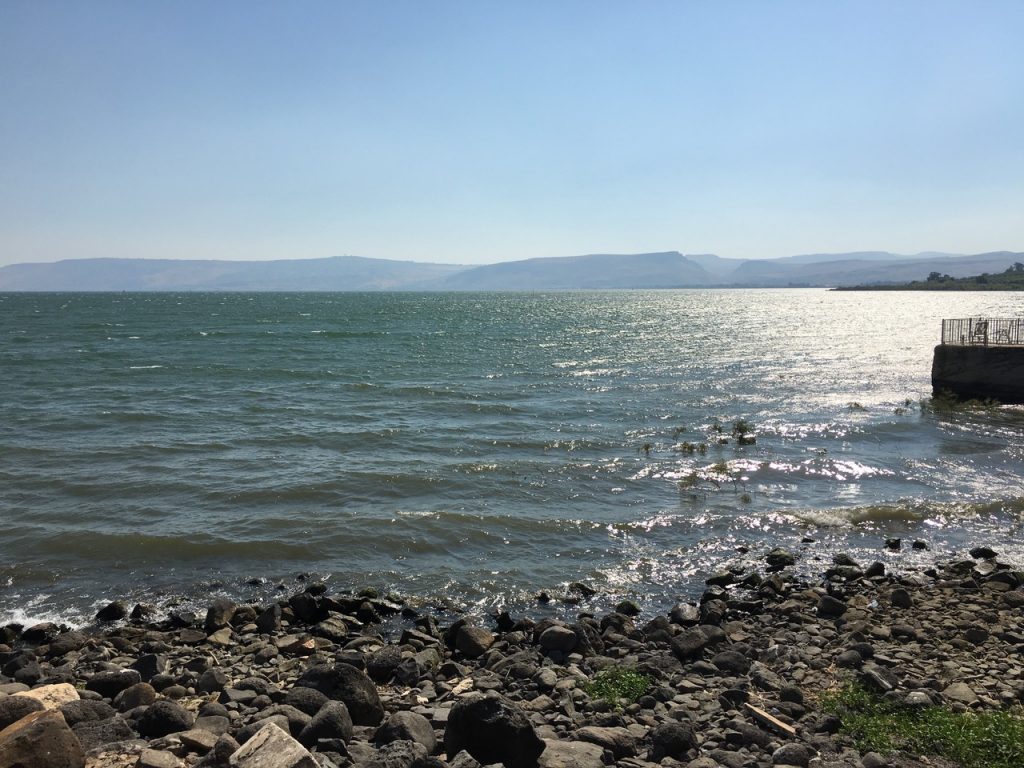
A view Peter and Jesus would have looked at innumerable times.
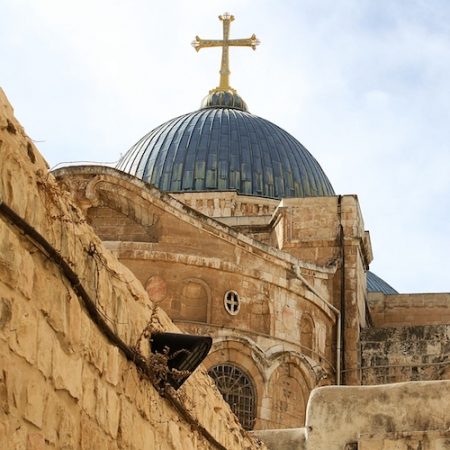
3 Comments
Interesting comment about the natural amphitheatre……
Absolutely!
I have added some interpretive comments about this. This was a case of matching textual interpretation with what the topographical context showed.
Commenting has been turned off.